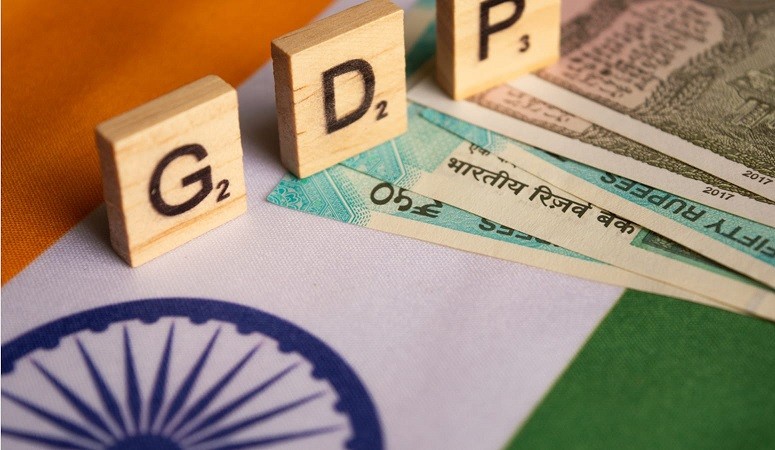
NEW DELHI: As per the provisional national income statistics issued by the National Statistical Office (NSO) on May 31, India's GDP growth accelerated to 6.1% in the quarter from January to March 2023, raising the economy's upswing in 2022–23 to 7.2% from the 7% anticipated earlier.
As per the estimates, the economy's Gross Value Added (GVA) increased by 7% in 2022–2023 as opposed to 8.8% in 2021–22, with manufacturing's GVA growth declining to just 1.3% from 11.1% in 2017 despite a 4.5% recovery in the fourth quarter following six months of contraction. Although certain industries surprised positively, especially in the final quarter of the year, economists noted that overall growth patterns remained uneven and that consumption remained subdued.
GDP Growth in agriculture and services: Only three of the eight major categories of economic activity saw GVA growth that was higher than in 2021–22, with the farm and services sectors boosting economic results.
The agricultural GVA increased by 4% from 3.5% the year before. In comparison to 2021–22, the GVA of the financial, real estate, and professional services sectors increased by 7.1%. Compared to the prior year, the GVA of the trade, lodging, transportation, and communication sectors, as well as services associated to broadcasting, increased by 14%.
Revised GDP and GVA: The NSO also decreased the GDP and GVA statistics for the first half of last year while slightly increasing the third quarter data. GDP growth for 2022–2023 is currently projected to increase by 13.1% in the first quarter, 6.2% in the second, and 4.5% in the third, up from the 4.4% forecast in February.
The final quarter of 2022–2023 saw a three-quarter high for GVA of 6.5%. The first and second quarter growth projections were reduced to 11.9% and 5.4%, respectively, but the third quarter GVA growth was increased to 4.7% from the previously estimated 4.6%.
Consumption growth that is muted: As per ICRA Chief Economist Aditi Nayar, "growth in private final consumption expenditure witnessed a slight uptick to 2.8% in Q4 from 2.2% in Q3, but it remained muted, belying the uptick in consumer sentiments as per the RBI's consumer confidence survey." As per Madan Sabnavis, chief economist at the Bank of Baroda, the higher-than-anticipated GDP growth last year could also lower growth forecasts for this year, which the government and central bank anticipate to be about 6.5%. Maintaining growth above 6% will be difficult amid a worldwide decline, he predicted.
"Pent-up demand, which boosted services throughout last year and the first two months of this fiscal year, will not be as strong, and private sector investment needs to increase. Given that exports won't be a factor in growth this year, the two engines that must run under pressure will be under even greater strain, Sabnavis said.
"Evenly distributed risks": The fourth quarter saw steady growth in the sectors of agriculture, industry, and services, Chief Economic Advisor (CEA) V. Anantha Nageswaran said. He claimed that among major countries, India's GDP growth of 6.1% in the fourth quarter was the fastest. He also said that this year's prospects are more promising than they were four months ago.
In contrast to when the Economic Survey was first presented, when we believed that downside risks predominated, "we are prepared to stick our necks out and say that the risks to a 6.5% growth projection for this year are more evenly balanced now," Nageswaran said.
Economically resilient: The figures for 2022–2023 GDP growth highlight the Indian economy's resiliency in the face of global problems. sai d Prime Minister Narendra Modi, "This robust performance, along with overall optimism and compelling macro-economic indicators, exemplify the promising trajectory of our economy and the tenacity of our people," he wrote in a tweet.
"Exports of goods and services accounted for 23.5% of GDP, the highest level since 2014-15, while private consumption hit the highest level since 2006-07 at 58.5% and gross fixed capital information, reflecting a sustained increase, is at the highest point since 2013-14 at 34% of GDP," the CEA stated.
The employment-intensive construction sector's GVA increased by 10% from 14.8% in 2021–2022 to 2022–2033. The GVA growth rate for mining and quarrying dropped to 4.6% from 7.1%. Only little slower than 9.9% in 2021–22, the GVA of utility services such as electricity, gas and water supply increased by 9%. The GVA of public administration, defence, and other services increased by 7.2% in 2022–2023 as opposed to 9.7% in the year prior.